The French are notorious for their butter-clad, flour-filled meals, but they seldom feel the adverse side effect of a high-fat, high-carbohydrate diet like we do in the United States. In Mareille Guillano’s book, French Women Don’t Get Fat: The Secret of Eating for Pleasure, she unravels many of the myths and secrets pertaining to this country’s particular diet patterns and lifestyle.
Sorry, but spoiler alert: French people do much more to keep their bodies healthy than a lot of Americans do. It’s time to start adopting some of their positive habits for a healthier, more positive perception of food.
1. Small portions make the stomach happy

Photo courtesy of @shayaar on Instagram
The French eat a myriad of chocolate, bread, and even foie gras. So why don’t they pack on the pounds like most of us do? They key is moderation. It seems as if the recommended serving sizes listed on many foods are just that: recommended.
But the French take these suggestions as requirements, and regardless of how delicious that fancy cheese is, they are only going to eat 1 oz of it, give or take. Not sure how to incorporate such a strict limitation into your diet? Get started with these tips and tricks to make this transition a whole lot easier.
2. Food is a social activity

Gif courtesy of giphy.com
Eating alone in France can be a big no-no. That’s because most see dining as a social activity, not just a race to shove everything into your mouth all at once. Eating meals is also considered a full time activity, and is not something you do while scrolling through Facebook or finishing a last-minute homework assignment.
The next time you’re with friends or family, try to be in the present. Don’t look at your phone. Don’t think about anything other than how lucky you are to be around such amazing people and equally as amazing food.
3. Lunch breaks are not 30 minutes or less

Gif courtesy of giphy.com
The French are serious about eating, and it clearly shows through the amount of time they spend just doing it. Most lunch breaks, even for school children, are at least 1-2 hours long. Pourquoi? Lunch is considered the main meal in France, and it usually entails a 3-4 course meal with copious amounts of fresh produce. Because eating is such a social activity, time is needed to chill and dine, and we think it’s a pretty good idea.
4. What is fast food?
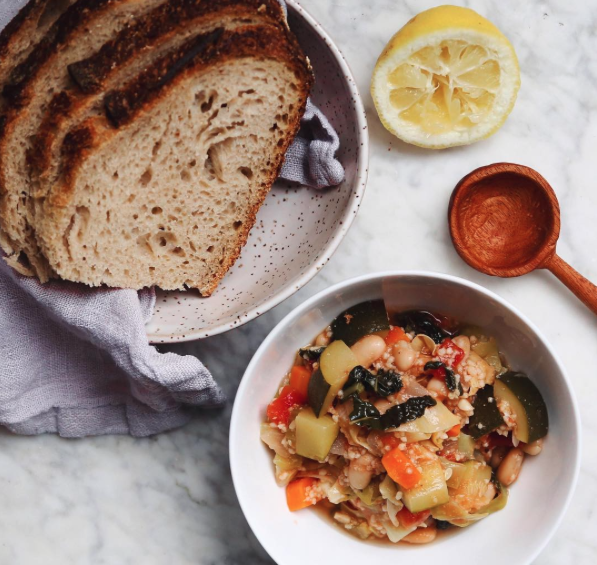
Photo courtesy of @tallulahalexandra on Instagram
Sure, France has fast food restaurants like McDonald’s, but most French food takes pride in is slowness. Stews boiled for hours, wine and cheese aged for year, you name it. The French have a knack for finding the joy in slow-prepared meals because they are not only more nutritious as opposed to their fast-food counter parts, but the food tastes exponentially better. Come on, we all know homemade chicken soup is way better than the canned version, right? My point exactly.
5. A diet consisting of mostly fats? Oui oui
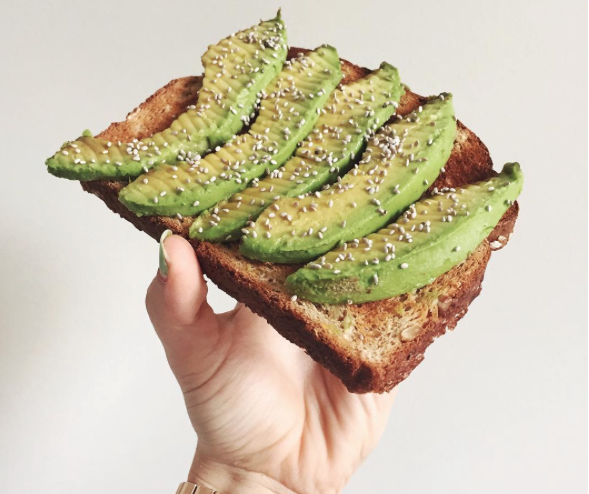
Photo courtesy of @emilieeats on Instagram
While many Americans spend copious amounts of time and money looking for next low-fat diet trend, the French are laughing on the other side of the Atlantic while they enjoy a healthy portion of rib-eye steak. It’s not that the French love to eat foods high in fat (which they do), it’s more about the kind of fat they ingest.
Foods rich in unsaturated fats, Omega-3 fatty acids, and more are a regular staple in the French diet. This means things like olive oil, fish, beans, and eggs are a must-have on the daily. Try swapping out your fatty favorites for better substitutes, like adding avocado onto your toast instead of butter.
6. Snacking game on
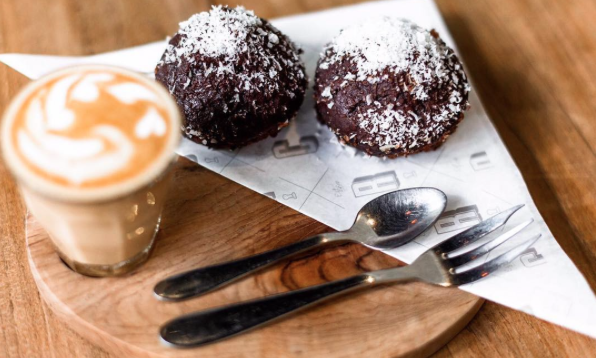
Photo courtesy of @crematology on Instagram
Many Americans, including myself, have struggled to set a regular schedule for mealtimes. This usually means skipping a few meals and over-eating at the next best chance. Other than the fact of how unhealthy this is, it also does your a lot of damage to your body. The French set out time to eat up to six times a day, each meal time with a special name and purpose.
Breakfast, called pétit-déjeuner (literally: small lunch) is usually just a snack with a morning coffee. Then there’s en-cas, which is a mid-morning snack, following by the largest meal of the day, déjeuner (lunch). After lunch, many children have a goûter, a snack time with juice and crackers. Adults can have an aperitif, which is served an hour before dinner to open one’s appetite, and finally a dîner (dinner) to finish the day. I don’t know about you, but I wouldn’t mind spending most of my day eating like this!
7. Gotta savor each bite

Gif courtesy of giphy.com
In this story from NPR, the author explains how many French parents entice their children to try all types of foods, while her own American-raised daughter wouldn’t eat anything other than white bread or pasta. She mentions how French parents always say, “You don’t have to eat it all, just taste it.” And voila, their children have become some of the most ethically diverse eaters in the world.
8. “Children’s food” is not real

Photo courtesy of sapphicscience on Tumblr
French children don’t have their own menus when they go to restaurants. They eat what their parents eat, and that’s that. At daycares, there are cheese courses — for the kids — with new cheeses everyday to tantalize their little taste buds. Many French children are also introduced to the kitchen at an early age, learning how to make many dishes and desserts like a pro. This is how so many French people grow up with a love for fresh fruits and vegetables, and not just pizza and ice cream 24/7. Oh, childhood.
9. Fresh, fresh, fresh
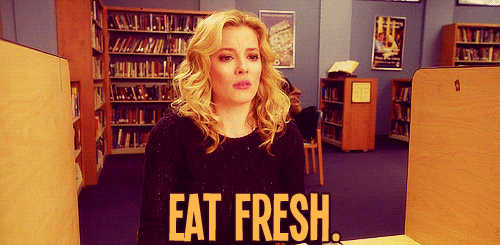
Gif courtesy of giphy.com
The amount of emphasis on freshness in French cuisine cannot be undermined. All of the flavor comes from the natural ingredients themselves, whether it be sweet tomatoes in the summertime, tart pears in the winter, or a 20-year old wine at any time of night. According to a study by SFgate, only 10% of American children get an adequate intake of fresh fruits and vegetables, while in France, over 40% of children do.
That could stem from how many French people have their own vegetable gardens, go to the market every morning, and eat meals that are so colorful, you could probably hang it on a wall (although it’s not advised to do so).
10. Lunch is the most important meal of the day
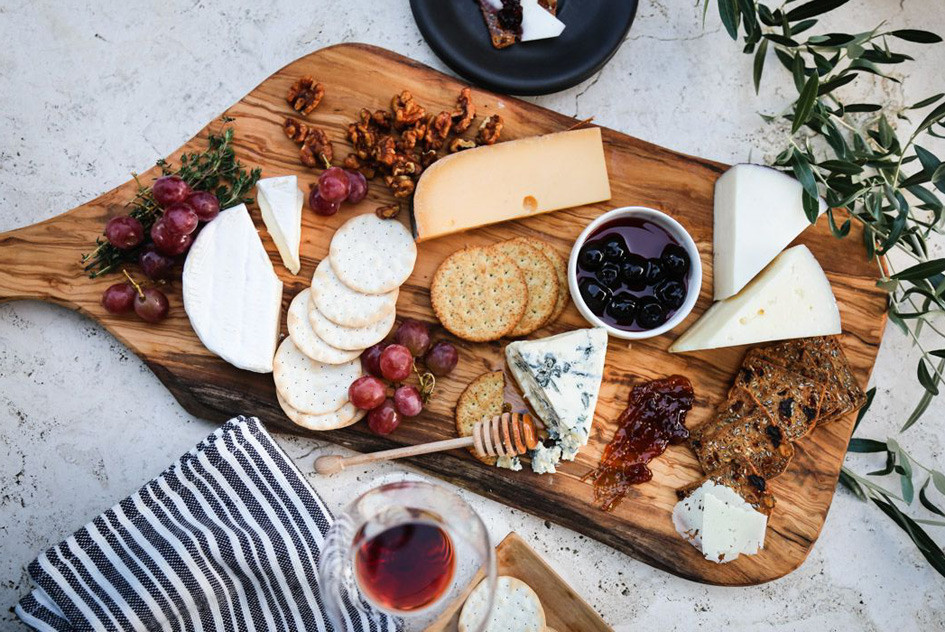
Photo courtesy of Pepper Flavor
Lunch in France is like the dinner in America — it’s a pretty big deal. It’s usually a hot three-course meal that lasts at least an hour long. Many health experts swear that eating your largest meal of the day during lunchtime, as opposed to dinner, helps in a number of health areas including weight control, digestion, decreasing levels of stress, and increasing levels of work or school productivity. Still skeptical? Try it for yourself and see if the ways of the French could benefit you.

Gif courtesy of giphy.com
It’s interesting to note all the differences when comparing the French perception of food to that of America’s. We all want to stay healthy, so why not try it the French way? What could be easier than getting healthier through good food and great company?


